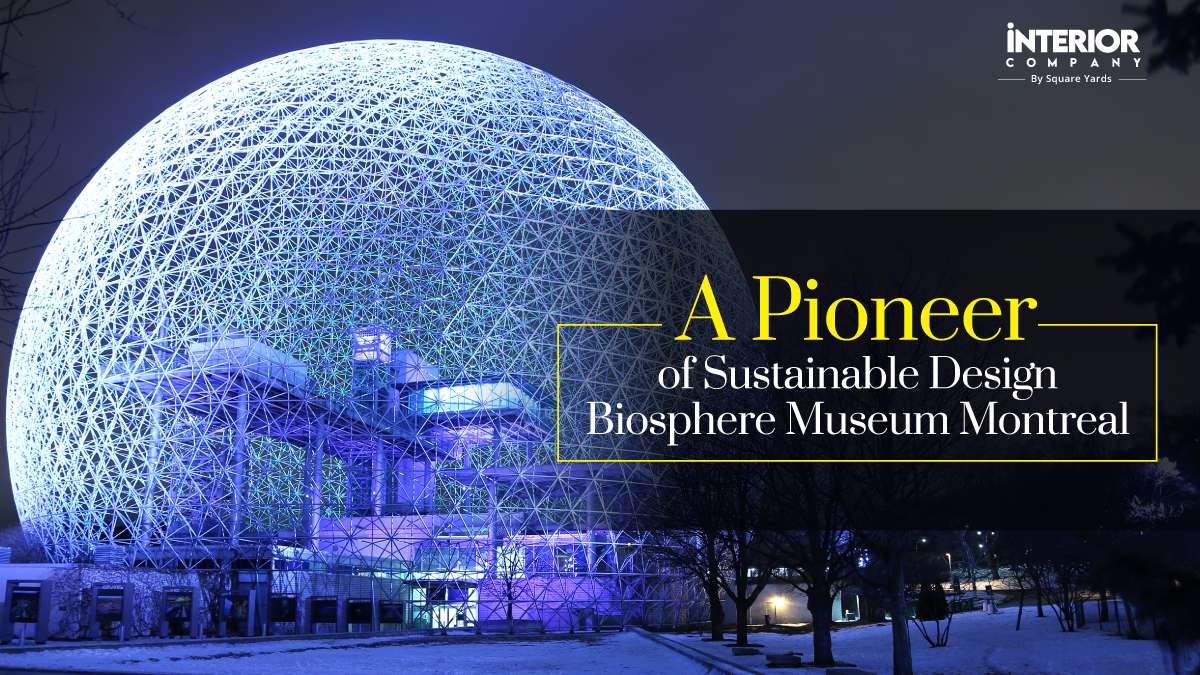Soaring at a height of 200 feet into the sky, this expansive sphere cladded in acrylic skin looks like a massive, glittering jewel. Heralded as an architectural wonder, Fuller’s creation was seen and admired by more than five million visitors. It housed an eclectic collection of American culture and exhibits such as spaceships from the Apollo missions and artwork from around the country.
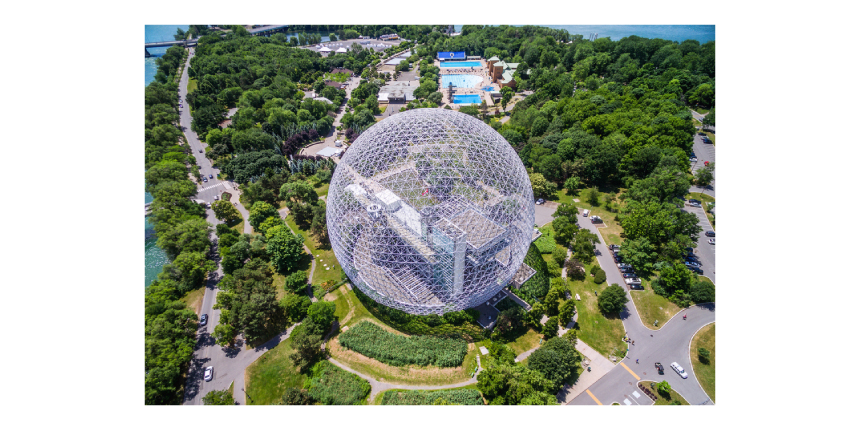
This blog celebrates the legacy of Buckminster’s Fuller and his most outstanding creation- Biosphere Museum Montreal, Canada
Also Read: Architecture of The Vessel – Hudson Yards, New York
History and Conceptual Design
Fuller’s progressive ideas are as relevant today as they were half a century ago. He believed that architecture was intended to exist in close contact with both mankind and nature, playing a critical role in elevating the environment. At a time when ideas like sustainability and green design were distant concepts, Fuller’s forefront thinking, philosophies, and inventions contributed to opening people’s eyes to the need for Green Architecture.
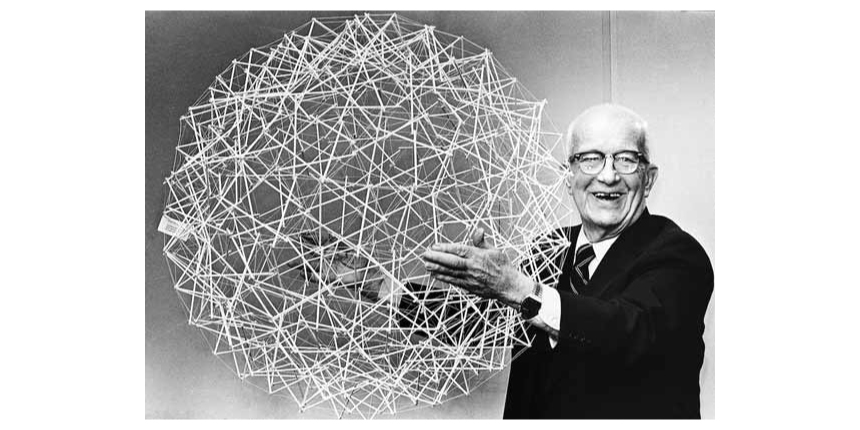
His most innovative and well-known contribution as an architect and designer is the Geodesic Dome- A ‘sphere-like structure composed of a complex network of triangles that draws on his concept of doing less with more. Geodesic domes can be built on any terrain and are structurally quite strong and stable, easy to build, and energy efficient. For almost two decades, he had been perfecting his designs of geodesic domes, understanding the material efficiency, structural integrity, and modularity of these forms to create a sustainable and easily replicated design.
Montreal Biosphere Architecture
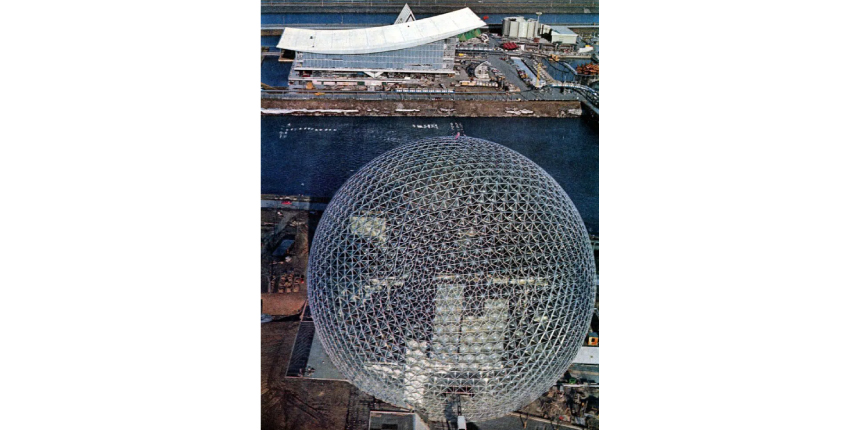 US Pavilion at Expo 67 in Montreal
US Pavilion at Expo 67 in Montreal
The most notable and spectacular example of Buckminster Fuller’s geodesic dome was Biosphere. In 1963, Fuller was approached by the US Information Agency to construct the country’s Expo 67 pavilion. The dome stands at two hundred feet high with a steel skeleton frame sheathed in an acrylic skin, and 1900 triangular panels. Constructed in a full two-thirds sphere, rather than the typical half dome, the immense structure was well received and resembled ‘an enormous silver bubble that floated above the fairgrounds’. The original dome was more opaque and visually solid than the version experienced today.
Also Check: Why Sustainable Construction is Very Important
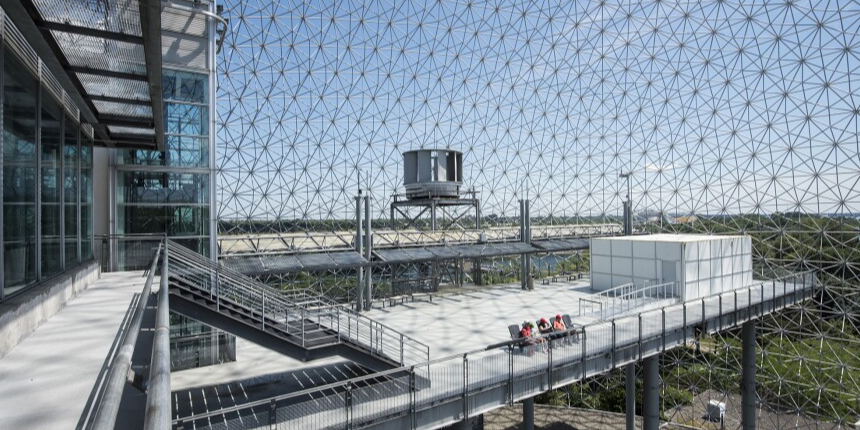
This lattice design was built from steel tubes and acrylic cells welded together to make hundreds of tetrahedrons, to optimally distribute forces throughout the system.
Credits-Alex Fradkin

Inside Biosphere Montreal World’s Expo 67
Interior of US Pavilion at Expo 67 World’s Fair
Credits- Cambridge Seven Associates
The expansive sphere houses a seven-story exhibition building showcasing the various programmatic elements of the exhibit including the space program, Hollywood, popular music, and contemporary art. The theme of the Exhibition was Creative America developed by the US Information Agency to flaunt all of the creative achievements of the United States on an international stage.
Expo 67 was considered the most successful World’s Fair of the 20th century with a record-breaking number of single-day attendance on the Opening Day of over 300,000 visitors. Amidst the other stunning structures—including Frei Otto’s steel-cabled German Pavilion and Moshe Safdie’s iconic Habitat 67, the Biosphere Montreal marvelled at attracting 5.3 million visitors within six months of its opening.
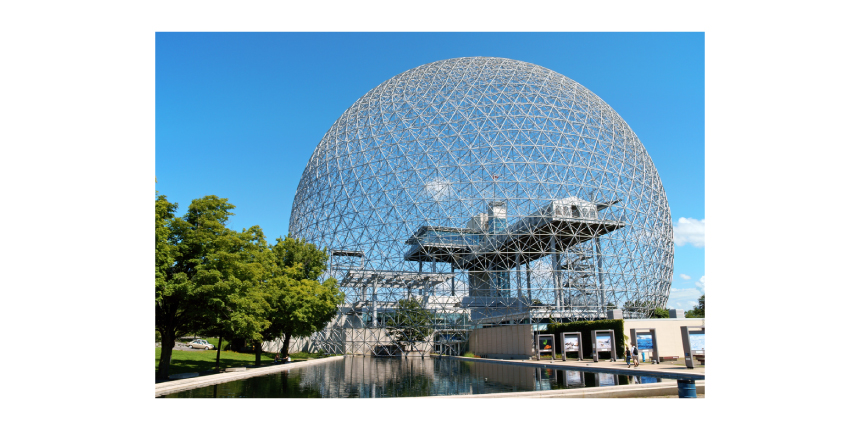
It housed the largest, running escalator then which moved people from one section of the exhibit to another. Adding to the architectural feats of the pavilion Mini- monorail, an automated rail system ran through the dome allowing visitors a glimpse of the inner structure. Due to the transparent acrylic skin of the structure visitors could look around and view the grounds of the Fair.
A Tragic Incident- Montreal Biosphere Structure
The Buckminster dome was originally meant to be bolted together, the intention was to dismantle it after Expo 67, but the U.S. Government donated its pavilion to Montreal on July 20 1967. For the following nine years, the biosphere museum remained open to the public with displays and exhibits housed within the metallic dome.
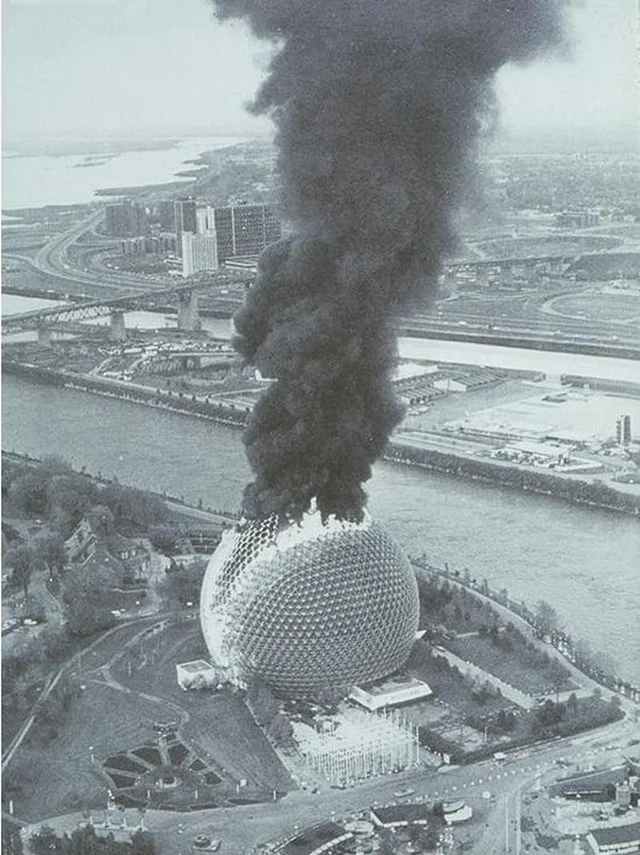
In 1976, structural renovations caused the acrylic covering to catch fire, engulfing the entire sphere in wild flames for 30 minutes, leaving the steel trusses of the dome remained. After the fire, the scarred Biosphere was abandoned and closed for the public forever for 15 years, a mere relic of times passed.
Rebirth Biosphere Museum Montreal
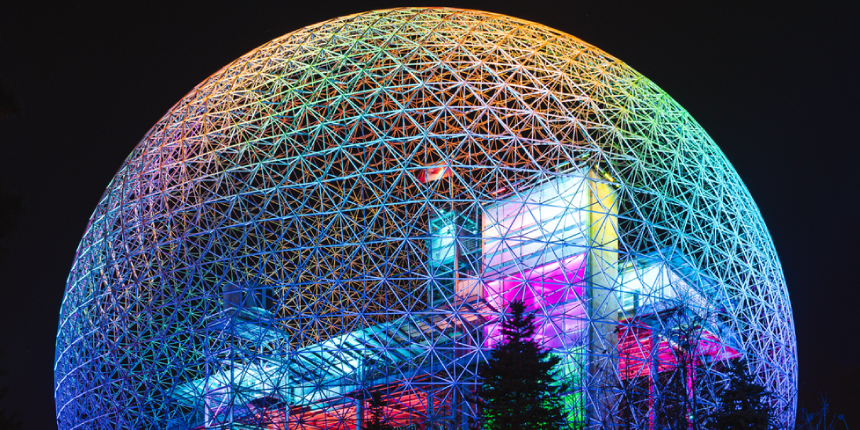
However, in 1995 the Biosphere surged back to life after the Canadian Government bought the site in 1990 and re-purposed it as an environmental exhibition space. The intention was to promote the dialogue between science, culture, social innovation and the environment. The Canadian Architect Eric Gauthier of Montreal revamped the interior shell of the Biosphere keeping the originality of Buckminster’s fuller dome.The rebirth of the biosphere as an environmental museum is the epitome of Fuller’s ideals, the zenith of technology’s promise. It houses exhibits and interactive features that address environmental concerns relating to water and air quality and sustainability. It continues as the city’s Crowning glory dazzling, colourful displays of light.
